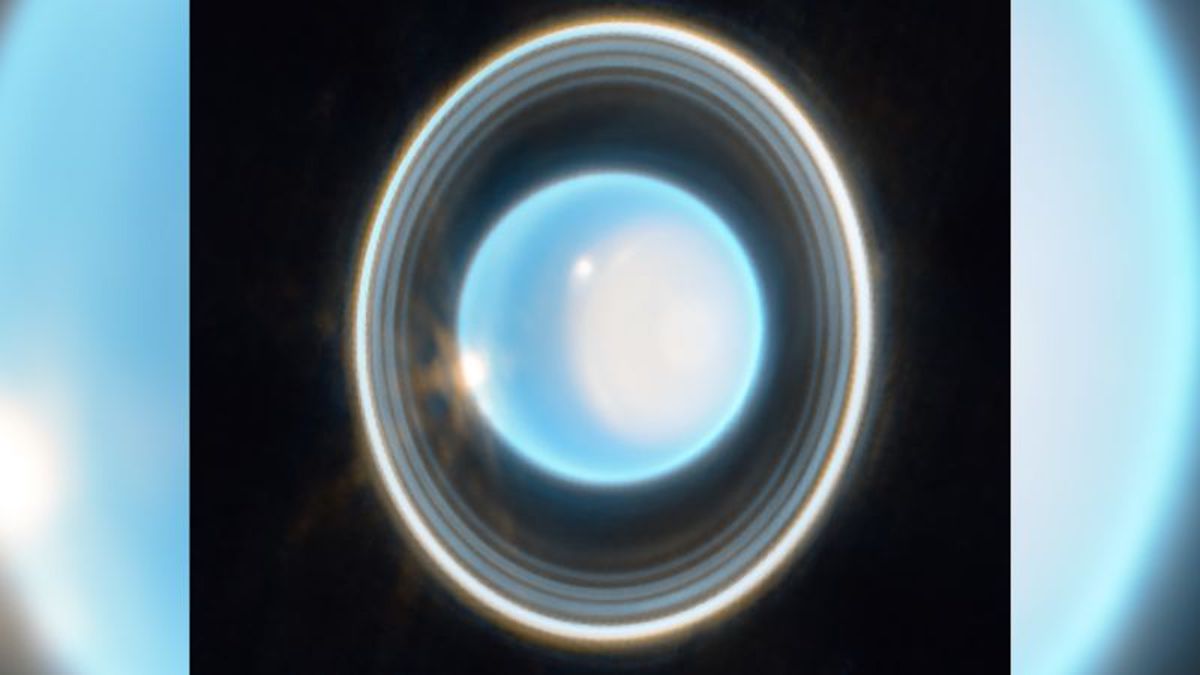(CNN) — The James Webb Space Telescope (JWST) has captured a stunning new image of the ice giant Uranus.
NASA said the image demonstrates the telescope’s remarkable sensitivity, as the faint rings had previously only been captured by the Voyager 2 spacecraft and the WM Keck Observatory in Mauna Kea, Hawaii.
Uranus has 13 known rings, 11 of which are visible. In the new look of the web. Nine rings are classified as the main rings, while the other two are more difficult to capture due to their dusty composition and were not discovered until the Voyager 2 flyby in 1986. The other two faint outer rings are not shown in the latter image. From pictures taken in 2007 NASA Hubble Space TelescopeAnd scientists believe the Web will overtake them in the future.
“A planet’s ring structure tells us a lot about its origin and formation,” said Dr. Naomi Rowe-Kurney, postdoctoral research scientist and Webb Space Telescope Solar System Ambassador at NASA’s Goddard Space Flight Center.
“Uranus is a strange world with its lateral tilt and lack of internal heat, and any clues we can get about its history will be invaluable,” he added.
Scientists hope that future Webb telescope images will capture all 13 rings. Rowe-Kurney hopes the telescope will discover more about Uranus’ atmospheric composition, helping scientists better understand this unusual gas giant.
A November Hubble image of Uranus (left) captured the planet’s bright polar cap, while Webb’s latest image showed more detail with a subtle glow in the center of the cap. (NASA/NASA)
The space observatory’s powerful near-infrared camera (NIRCam) can detect infrared light that is invisible to astronomers.
“JWST gives us the ability to look at both Uranus and Neptune in a new way because we don’t have a telescope of this size in the infrared,” Rowe-Kurney said. “Infrared can show us new depths and features that lie between the atmosphere that are hard to see from here. (Those) depths are invisible to visible-light telescopes like Hubble.”
More about Uranus
Located nearly 3 billion kilometers (1.8 billion miles) from our Sun, Uranus takes 84 years to complete one full revolution. Unlike Saturn’s horizontal ring system, the planet is unique in that its rings are tilted to one side, making them appear vertical.
NASA previously reported that a bright haze around Uranus’ north pole appears in the summer when the pole is exposed to direct sunlight. According to the space agency, atmospheric haze is getting brighter every year. While the exact mechanism behind the haze is unknown, scientists are studying the polar cap using telescope images like this new web image.
In the original films The Voyager 2 spacecraft lifted off from Uranus The planet appeared as a fuzzy blue ball. However, in this new web image, like other recent Hubble Space Telescope images, storm clouds can be seen at the edge of the polar cap. The tilt of Uranus causes extreme seasons and this stormy weather, and scientists track and document changes over time by comparing different images from telescopes.
Images taken by the Hubble Space Telescope in 2014 and 2022 show an increase in the size and brightness of Uranus’ north polar cap. The latter image includes a bright fog area.
NASA’s Hubble Space Telescope captured Uranus’ brilliant white polar cap in November, illustrating the haze’s increasing brightness compared to images from previous years. Webb’s new image shows the polar cap in much greater detail than the Hubble image, with a subtle glow in the center of the cap and more visible storm clouds around the edges.
Identified as Uranus Priority for inspection in 2022 by the National Academies of Sciences, Engineering, and Medicine. “Additional studies of Uranus are currently underway, and Webb’s first year of science operations is still planned,” a NASA statement said after the announcement.





:quality(85)/cloudfront-us-east-1.images.arcpublishing.com/infobae/KTKFKR763RBZ5BDQZJ36S5QUHM.jpg)